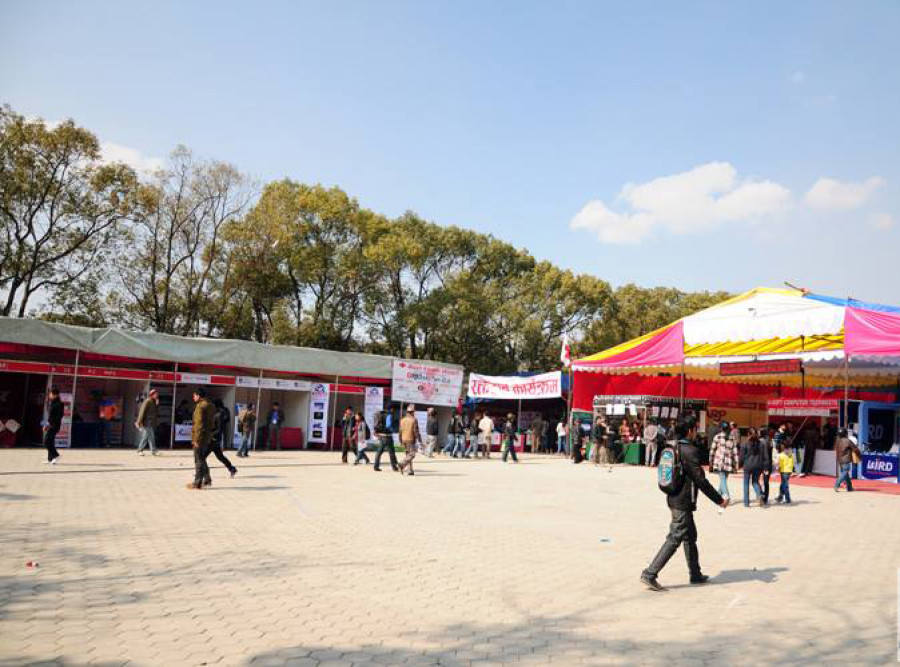Valley
Kathmandu plans to build hall at expense of open space in heart of city
Urban Planners and heritage conservationists criticise it and say such concrete structures should not be built on the last remaining open spaces in the city.
Anup Ojha
At a time when Kathmandu's open spaces are shrinking due to rapid construction of concrete structures, Kathmandu Metropolitan City has announced plans to build a “mega hall” in Bhrikutimandap.
Urban planners and heritage conservationists say that such structures should not be constructed on the only remaining open spaces in the city.
“This is the only breathing space in Kathmandu, and what the city is planning does not make any sense,” said urban planner Suman Maher Shrestha. “ This space has its own value for everyone, especially during the time of a crisis,” said Shrestha.
Bhrikutimandap is the only remaining open space in the heart of Kathmandu, after Tundikhel and Khulla Manch, which have already been encroached upon. It is also one of the 800 locations identified by the Kathmandu Valley Development Authority as open spaces people can go to during the time of disasters such as an earthquake.
According to plans announced by Mayor Bidya Sundar Shakya, the hall will spread over 26.6 acre of land, will have six meeting rooms each to accommodate 200 people each, three conference halls for 450 people each and an auditorium that can host 3,000 people. Similarly, parking space for 1,000 cars will also be available.
The hall will also feature a green room, food court, restaurants and an exhibition hall.
Saroj Basnet, vice-chairperson at the city’s Urban Planning Commision, said that not all of the land will be used for the hall. He said 60 percent of the space will be allocated for a garden, and the hall will be built on the remaining 40 percent.
Basnet said Mayor Bidya Sundar Shakya has taken up the hall as his “dream project”.
Shakya, who has courted controversy over several projects including the reconstruction of Rani Pokhari, recently criticised a civil society-organised and citizen-led movement to safeguard open spaces in the city as publicity stunt of some politically motivated people.
Ganapati Lal Shrestha, one of the youth activists behind the ‘Occupy Tundikhel’ campaign said the city’s decision defies logic. “Instead of preserving open spaces, the city has been destroying them. Now it plans to build a hall at the time of the coronavirus pandemic,” said Shrestha.
According to geographer, Pitamber Sharma, only around 0.4 percent of the land area in the city is reserved for open spaces, increasingly under encroachment from various bodies.
The open space at Purano Buspark has been occupied to build a view tower after the city awarded the contract to Jaleswar Swachhanda Bkoi Builders. But the contractor has been unable to carry out significant work. Similarly, over fifty percent of the land belonging to the historic Khulla Manch has been encroached upon for over four years. But the city hasn’t done anything to preserve it.
“We protested so much to return the encroached land in Tundikhel to the public, but city officials showed their indifference towards our demand to preserve open spaces,” said Ganapati Lal Shrestha.
The city office has allocated Rs 1.2 billion for the project. Campaigners accuse the city of coming up with the plan for Bhrikutimandap just to “spend money” without any sense of purpose. They also say that if the Mayor really wants to build a hall, it can be built somewhere else.
“This could be a good concept as Kathmandu does not have a place to host big conferences. But officials could have looked for other places, because Bhrikutimandap is the only a remaining open space in the city right now,” said planner Shrestha.




 16.12°C Kathmandu
16.12°C Kathmandu.jpg)










